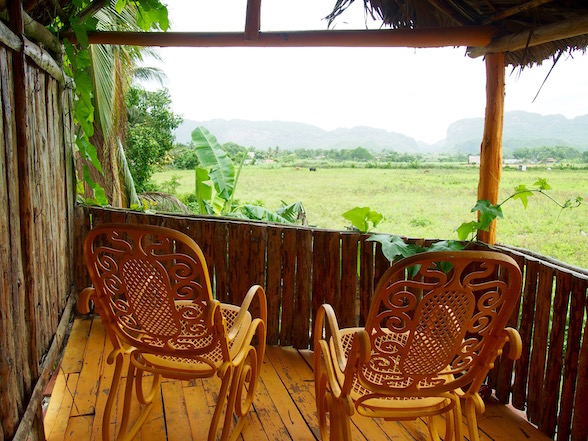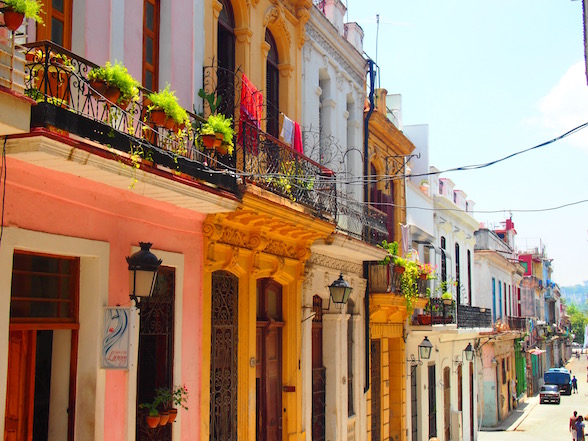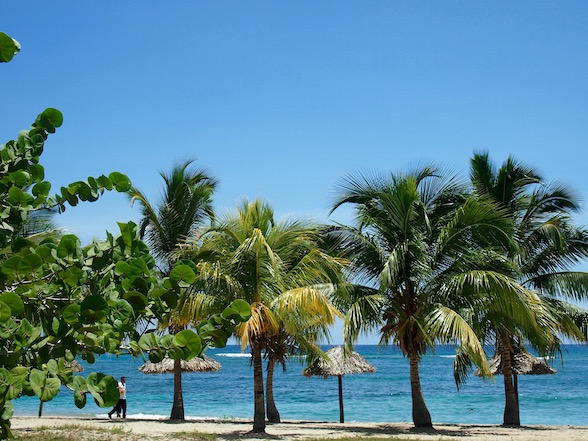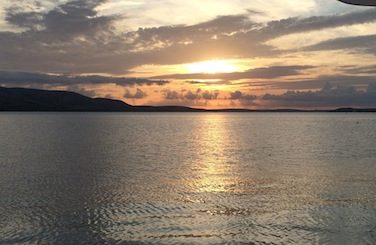While some destinations have seen a declining number of visitors travelling to their region due to tragic events in the past months, other parts of the world are witnessing the opposite trend. Cuba is a perfect example for the way geopolitics affect tourism in a positive way: since the restoration of diplomatic relations with the US last year, Cuba has become a top emerging destination in the world. E&M editors Nicoletta and Victoria have given in to this fast-spreading Cuban fever and went to discover the island as it opens up to the world.
We give you E&M’s experience of Cuba in 6 themes – feel free to use them as a survival guide for future travel plans to Havana, the Unesco World Heritage site of the Vinales Valley to the West, or the paradisiac region of Baracoa in the far-East tip of the island.
Political situation
Formerly a Spanish colony, Cuba gained independence in 1902, under American protection. The island, and especially Havana, then became a playground for American – and European – travellers, as well as US mafia bosses, some of which even holding positions in the corrupted governments that characterised this period. After the triumph of Fidel Castro’s guerrilla army against the Batista regime in 1959, Cuba was proclaimed a communist state in 1961 and soon agreed on an alliance with the USSR. The end of the Cold War, however, did not lead to an improvement of Cuba’s relationship to the West.
Today, Cuba is officially a socialist republic, controlled by a unique party: the Partido Comunista de Cuba (PCC). Fidel stepped down as president in favour of his brother Raul in 2008. Since then, in an effort to boost the economy, measures have been taken to lift certain bans on private property and liberalise some professions. Ties with the EU and then the US have also gradually been restored, culminating in July 2015 when both the US and Cuba reopened their respective embassies in the other country.
It is difficult to evaluate at which rate the country is opening up to the world and a global market. When we went last June, it took us a little while to realise that the lack of advertising and of products and brands that we knew was part of what made us feel like we were in a different world. Of course, the overwhelming presence of propaganda posters in support of the government and in celebration of the Fathers of the Revolution played an important part! It is safe to say that Cuban propaganda has proven effective in turning us into big Che Guevara fans – like most Cubans are! With regards to Fidel, however, we heard mixed opinions: from a museum guide passionately telling us about her love for Fidel and how amazing his 90th birthday celebrations would be in August, to our Airbnb host in Havana who vehemently criticised Fidel for destroying the country and praised Raul for his measures, even though “he’s still a dictator”. Che, Fidel and Raul are controversial figures, the complexity of which cannot be properly discussed here.
Accommodation

There are two types of accommodation for tourists in Cuba: state hotels or casa particulares. The latter is literally Cuba’s own version of Airbnb: locals rent out one or more rooms in their own house. We cannot comment on state hotels as we decided to trust our travel guide and avoid them at all costs (although they are actually more expensive than casa particulares!)
What we really loved in the casa particulares was the warm welcome we always received and the opportunity to discuss various topics with our hosts – unfortunately in a very broken Spanish on our part. That’s how we learnt that a growing number of Cubans are turning to the tourism industry as it is the best way to earn a living. One of our hosts was actually a trained lawyer who gave it up to build a new house and welcome tourists instead!
The major advantage of the casa particulares, however, is that once you’ve found one, you’ll tap into a network of casas all over the country: no need to book anything, your host will send you to his friend or acquaintance in the next place you plan on visiting. If, like ours, your Spanish isn’t exceptional, it makes it easier to book and negotiate for prices as they usually call for you, but it is also reassuring to arrive in a new city or village knowing you’re going to a place that was recommended to you.

Driving
This one is tricky, because neither of us actually drives (hopefully not for too much longer though). But you can still trust our comments, as we travelled with two other friends, both excellent drivers. To be completely honest, we kind of thought that the car we rented would be one of those huge American cars from the twenties that you see everywhere in Havana (or maybe it was just me). However, we’ve been in some of those, the taxis collectivos that you hail on the street and share with other passengers, and it is obvious even our great drivers wouldn’t have been able to drive them. It is hard to understand how some of them still function, as half of the pieces have been replaced with… well anything that could work, like a vacuum-cleaner hose for a gear-stick!
So, nothing like this in the cars rented to tourists: ours was brand new, everything worked fine and we even had AC. But, you should be prepared to drive along people walking or cycling on the side of the motorway, carts pulled by horses or cattle, as well as cars that you’ll recognise to be imported from former Soviet Republics and the famous American ones. And holes too, a lot of them, that you’ll need to try and avoid. Another thing you’ll see on the roads, especially at crossroads, but also in the middle of nowhere, is people selling various fruits and cakes, and a lot of hitchhikers. Transports are indeed not reputed to be very efficient (we haven’t actually seen any train, and the bus network is not extensive), so hitchhiking – or walking – is often the only solution for a lot of Cubans. So if you want to explore more than Havana and its surroundings, we really recommend you rent a car.

Food
Now, we came to Cuba without having any idea what to expect, but naively assuming – it’s a holiday and so the food must be sensational! I was completely caught off guard by the cuisine we found in Cuba. Cuba’s very particular history is also palpable through its culinary traditions, which made the experience even more interesting. During the US’s blockade, known as ‘el periodo especial’, the special period, ifferent products were extremely difficult to access, spreading extreme poverty and scarcity of food across the country. Since the lift of the block and as Cuba begins to slowly open to the world, not only have the portions doubled but different regions have begun to experiment with products that for years they no longer had access to.
Sensational concoctions of fruit juices are to be found everywhere, although be aware to make sure that they boil the water they use so as to avoid a nasty reaction. From the shredded beef simmered in tomato-based sauce, Ropa vieja, in Havana to the succulent fish simmered in coconut milk in Baracoa on the east coast – always served with rice, beans and fried plantains – travelling across the island is a real culinary experience.
Also, given the aforementioned culture of casas particulares, many of these hosts will feed you – and this was by far one of our favourite experiences travelling through Cuba! Every morning an incredible breakfast spread (although after 20 days, omelette, cheese and ham toastie and fruit salad every morning in the typically Cuban enormous portions became somewhat challenging…). When your hosts are kind enough to offer to make you dinner, you not only get to know them and therefore really immerse yourself in the local culture, but also really enjoy the local products. Cuba is certainly not known for its culinary wonders, but has far more to offer than meets the eye.

Rum & Cigars
Upon departure, I already had about a million requests for rum and cigars. Already the first day perusing the streets of Havana, at least five different people approached us offering us the apparently ‘best’ deals for cigars in a cooperative nearby, reassuring us that they would not be giving inflated prices like they do for the ‘american tourist’! This constant incessant persuasion of who had the best cigars made us realise finding the best cigars would indeed be a challenge.
In the beautiful valley of Viñales in western Cuba we took a rather touristy horseback tour of the park. This tour had a pit stop at a tobacco plantation where we had three generations of tobacco farmers teach us how a cigar is made, and then tirelessly attempted to show us the real Cuban way of smoking it (including dipping the end in some home-made honey!).They also went on to teach us more about the more commercial cigar brands, such as those smoked by Fidel and Che – the Romeo y Julieta’ and the ‘Montecristo’. Both named after the classic novels, as when factory workers would be slaving away at the production of these cigars, there would always be someone reading out classic novels to keep them motivated.
I must admit, far less research went into our acquisition of rum. The world renowned Havana Club didn’t come as much of a surprise to any of us – I believe it was the setting that made it the more special. But there was such an incredible variety of rum, of all different graduations and taste. The supermarkets would contain about 50% food and 50% rum. Mojitos, Cuba Libre, Daiqiri can distract you from the pure mediocrity of the national beer – which we actually then grew to love but probably mainly due to local pride.

Music
Where to begin?! The music was just as amazing as you’d expect! European cities have begun to be taken over by salsa nights, full of clumsy people being lead by professionals to the sweet melodies of Cuba’s finest. Bear with me, and I’m sorry to say this, but there is really nothing quite like the real thing. Every city has its own ‘casa de la musica’ or ‘casa de la trova’ where, every night, all the locals reconvene to share their passion for music and dancing. Different times are assorted for different age groups, so make sure to slip in at the right time!
I must also admit that maybe the music isn’t for everyone, we were all avid salsa and reggaeton fans, therefore our experience may be relatively biased. The experience is also extremely different based on gender. I must admit that as a woman after a few times of braving the dancefloor and never managing to dance for a split second on my own, I started to miss my personal space a lot. The Cuban reggaeton superstars Jacob Forever and Yumil y el Dani never went amiss. Although the rather sensual dancing that accompanies reggaeton really treads on the fine line between just dancing and something far more intimate.
The salsa however, was a completely different experience. Whilst the reggaeton was just a bit of fun, maybe an excuse to make ridiculous advances on someone you’ve had your eye on, or the tourist you’d quite like to buy you a few drinks – salsa is serious business. Locals take it upon themselves to teach you the 7-step dance and keeping up is an embarrassing yet exhilarating experience. We have never had so much fun whilst making absolute fools out of ourselves. Looking around the dancefloor, women being spun around and people dancing exquisitely were everywhere to be seen. Rigid gender dichotomies and gender stereotypes of the girl waiting on the sidelines waiting for the man to invite her to dance and to lead permeate this dancing culture. We, however, also had the delight of seeing a live professional salsa show by a solely transgender dance crew in the local casa de la musica in Baracoa, which was a ray of hope in an archaic social display of gender roles.










